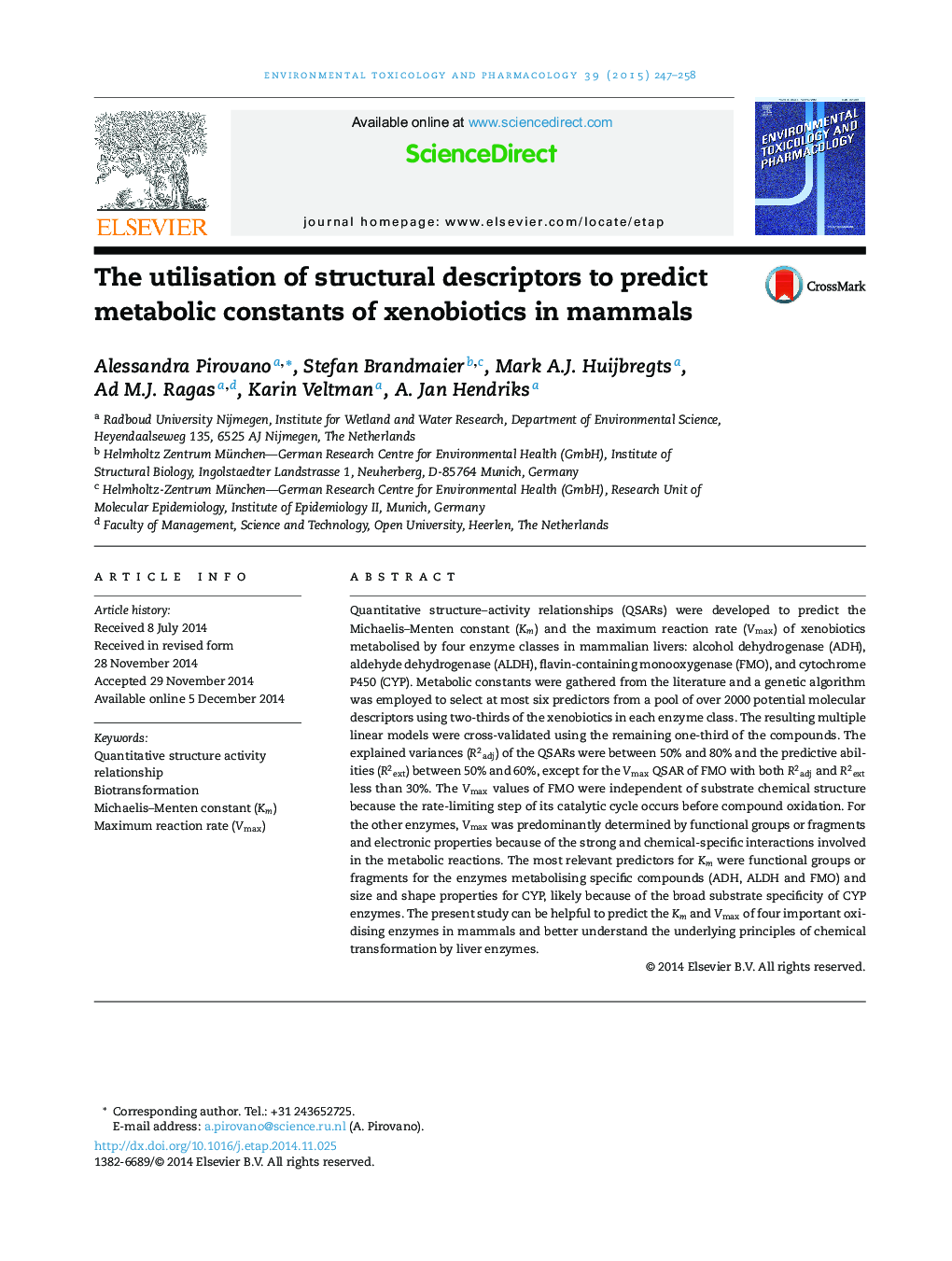| کد مقاله | کد نشریه | سال انتشار | مقاله انگلیسی | نسخه تمام متن |
|---|---|---|---|---|
| 2583284 | 1130685 | 2015 | 12 صفحه PDF | دانلود رایگان |
• QSARs for biotransformation via four enzymes in mammals were developed.
• The size and shape of chemicals influenced binding affinity to CYP.
• Structural fragments were important for the binding affinity for ADH, ALDH and FMO.
• Maximum reaction rate depended on structural fragments and electronic properties.
Quantitative structure–activity relationships (QSARs) were developed to predict the Michaelis–Menten constant (Km) and the maximum reaction rate (Vmax) of xenobiotics metabolised by four enzyme classes in mammalian livers: alcohol dehydrogenase (ADH), aldehyde dehydrogenase (ALDH), flavin-containing monooxygenase (FMO), and cytochrome P450 (CYP). Metabolic constants were gathered from the literature and a genetic algorithm was employed to select at most six predictors from a pool of over 2000 potential molecular descriptors using two-thirds of the xenobiotics in each enzyme class. The resulting multiple linear models were cross-validated using the remaining one-third of the compounds. The explained variances (R2adj) of the QSARs were between 50% and 80% and the predictive abilities (R2ext) between 50% and 60%, except for the Vmax QSAR of FMO with both R2adj and R2ext less than 30%. The Vmax values of FMO were independent of substrate chemical structure because the rate-limiting step of its catalytic cycle occurs before compound oxidation. For the other enzymes, Vmax was predominantly determined by functional groups or fragments and electronic properties because of the strong and chemical-specific interactions involved in the metabolic reactions. The most relevant predictors for Km were functional groups or fragments for the enzymes metabolising specific compounds (ADH, ALDH and FMO) and size and shape properties for CYP, likely because of the broad substrate specificity of CYP enzymes. The present study can be helpful to predict the Km and Vmax of four important oxidising enzymes in mammals and better understand the underlying principles of chemical transformation by liver enzymes.
Journal: Environmental Toxicology and Pharmacology - Volume 39, Issue 1, January 2015, Pages 247–258
